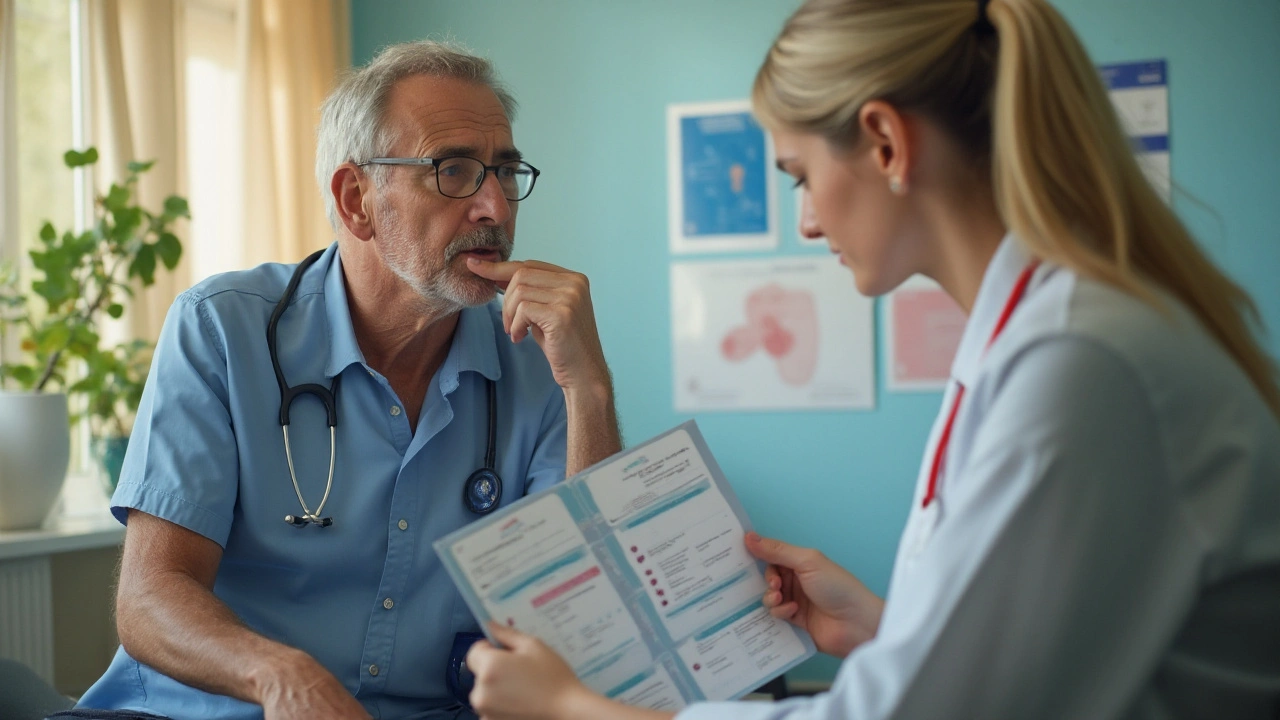Hypertension Management: Practical Steps You Can Start Today
High blood pressure doesn’t have to feel out of control. You can lower readings with simple daily habits, smart monitoring, and the right meds when needed. Below are clear, practical actions you can take right now and the common medication choices your doctor may consider.
Daily habits that cut blood pressure
Cut your sodium: aim under 2,300 mg per day and try for 1,500 mg if you can. That’s roughly one teaspoon of salt or less. Focus on fresh foods, cook at home, and skip the salty sauces and packaged snacks.
Move more: 30 minutes of brisk walking five days a week lowers blood pressure and helps you lose weight. If 30 minutes straight is hard, split it into three 10-minute walks.
Eat the DASH way: more vegetables, fruit, whole grains, lean protein, and low-fat dairy. The DASH pattern is proven to reduce blood pressure within weeks.
Lose a few pounds: every 5–10 pounds you lose can make a difference. Even modest weight loss often drops systolic pressure by several points.
Limit alcohol and caffeine, quit smoking, and manage stress with breathing, short walks, or simple yoga. Small, consistent changes beat occasional big efforts.
Medicine options and what to expect
When lifestyle changes aren’t enough, doctors use drugs from several classes. Each works differently, so your choice depends on other health conditions and side effects.
- Thiazide diuretics (example: chlorthalidone) help your body shed salt and fluid.
- ACE inhibitors (like lisinopril) and ARBs (like losartan) relax blood vessels; ARBs avoid the cough some people get with ACEs.
- Calcium channel blockers (eg, amlodipine) lower pressure by relaxing vessel muscles.
- Beta blockers (eg, metoprolol) slow the heart and cut pressure, often used when there’s heart disease.
- Terazosin (Hytrin) can help blood pressure and relieve urinary symptoms from an enlarged prostate, but it can cause dizziness when you stand up.
Don’t stop or switch meds on your own. Some drugs need a slow taper to avoid rebound effects. If side effects appear—dizziness, swelling, cough, or unusual fatigue—talk to your provider.
For people with diabetes or heart disease, newer drugs like SGLT2 inhibitors may offer added heart and kidney benefits. Discuss if these fit your situation.
Monitor at home: buy a validated arm cuff, check readings at the same times each day, and keep a log. Bring your log to appointments so your doctor can spot trends quickly.
Know when to seek immediate care: a reading above 180/120 with chest pain, trouble breathing, sudden weakness, or vision changes needs urgent attention.
Want deeper info? Read our guides on medication alternatives, natural diuretics, and specific drugs like Hytrin or Losartan alternatives to match treatment to your needs. Managing blood pressure is a step-by-step process—small, steady moves add up to big results.

